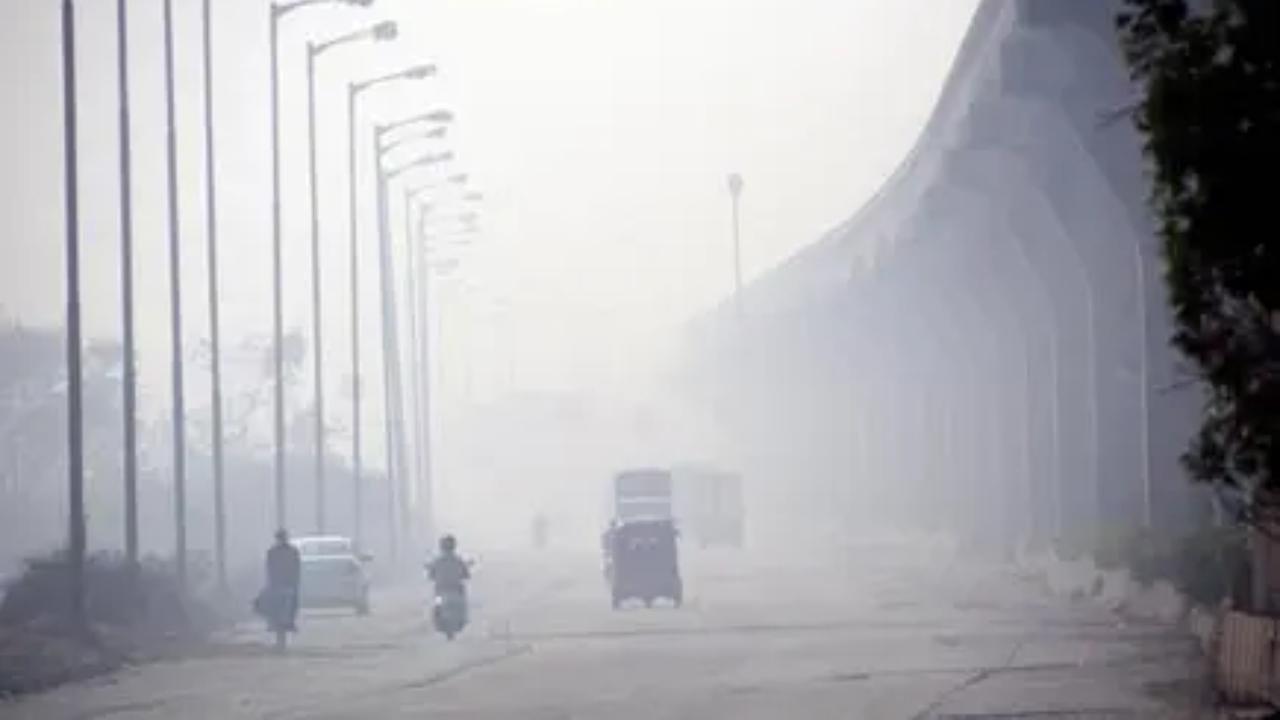Study recommends integrating Mumbai and satellite cities into a unified coastal airshed to tackle urban and regional pollution

Representational Pic/File
A groundbreaking pan-India study has proposed a new solution to Mumbai's persistent air pollution: a regional airshed approach. The full study, published in the peer-reviewed journal Air by MDPI on July 12 2024, recommends dividing India into 15 regional airsheds tailored to specific climatic and pollution patterns, with Mumbai and its satellite cities forming one cohesive coastal airshed.
The findings challenge Mumbai's current focus on managing local pollution sources, emphasizing that such efforts alone may be insufficient to improve air quality, particularly during the winter months when pollution spikes. The study highlights the need for a cooperative framework among urban local bodies (ULBs) and neighboring regions to tackle shared pollution challenges effectively.
India's Proposed Regional Airsheds
The study divides India into 15 regional airsheds based on climatic and pollution profiles Himalayas: 2 airsheds, Gangetic Plains: 4 airsheds, Plateaus: 4 airsheds, Arid/Desert: 1 airshed, Coastal Plains: 3 airsheds, Islands: 1 airshed
The Indo-Gangetic Plain (IGP), which houses 41% of India’s population and faces severe pollution due to industrial activity and agriculture, is identified as a priority. However, the study also underscores growing pollution in coastal cities like Mumbai, despite natural land-sea breezes.
What is an Airshed?
An airshed is a geographic region where air pollution levels are measured and managed collectively, recognizing that pollutants cross city and state boundaries. This approach calls for collaborative efforts across administrative borders to ensure effective air quality management.
Why Mumbai needs a regional airshed approach
Mumbai's air quality has worsened during winters, driven by local emissions and pollution from neighboring regions. The World Air Quality Report 2023 revealed a 23% increase in PM2.5 levels in January 2023 compared to the previous year, placing Mumbai among the world’s most polluted cities during winter.
“Mumbai is a significant contributor to regional air pollution,” said Dr. Sarath Guttikunda, lead author of the study and founder of UrbanEmissions.info “While local emission controls in Mumbai are beneficial, the city also absorbs pollution from its satellite cities and vice versa. Coordinated management within a regional airshed can create a positive feedback loop, improving air quality across the entire Western region," he added.
Mumbai’s coastal airshed: A collaborative solution
Integrating Mumbai with its satellite cities in a single coastal airshed would involve participation from ULBs, state officials, and regional stakeholders. This collaboration could tackle pollution from urban, industrial, and rural sources, creating a unified strategy for emission reduction.
“The urban regional airshed concept ensures that air quality management accounts for the interconnectedness of regions,” said Dr. Guttikunda. “For coastal cities like Mumbai, such coordination is critical to mitigating seasonal spikes in pollution and addressing long-term health impacts.”
Lessons from the US environmental model
The study advocates for a national air quality management system inspired by the US Environmental Protection Agency’s (USEPA) model. This framework would centralize data collection, monitoring, and pollution control efforts across airsheds, fostering transparency and accountability.
“A centralized system would enable seamless collaboration between cities, states, and airsheds, ensuring progress towards common clean air goals,” Dr. Guttikunda explained. “Air pollution is not just an environmental issue—it’s a public health crisis. A coordinated airshed approach can bring transformative change, benefiting millions across urban and rural India," he said.
GOI's call for action
As air pollution continues to jeopardize public health and economic growth, the study’s findings present a compelling case for immediate implementation of a regional airshed framework. By adopting this approach, Mumbai can lead by example, demonstrating how collaboration and innovation can address one of India’s most pressing challenges, Guttikunda suggests.
Amid worsening air quality in Delhi and the NCR, the Ministry of Environment, Forests, and Climate Change (MoEF&CC) took a decisive step in September 2024 by forming a coordination committee to address air quality issues in the Indo-Gangetic Plain (IGP) airshed.
On November 7, the Principal Scientific Adviser (PSA) to the Government of India (GoI), Professor Ajay Kumar Sood, chaired a stakeholders' meeting to tackle air pollution and its links to climate change. This meeting followed a Brainstorming Workshop on the National Air Quality Resource Framework of India (NARFI), hosted in collaboration with the National Institute of Advanced Studies (NIAS), Bengaluru, in June 2022. The workshop had strongly underscored the necessity of such a framework to address air quality challenges.
Building on this momentum, the PSA's Office sponsored a project with NIAS in early 2023 to explore Airshed Management across Peninsular India. The project utilizes high-resolution emission data and advanced GIS-based models to examine pollution transport mechanisms, assess emissions impacts, and analyze regional climatic influences. The aim is to develop a robust, evidence-based, and scientifically grounded structure for air quality management.
During the meeting, Professor Sood emphasized the urgent need to improve air quality, especially in the context of accelerating climate change, due to its profound impacts on public health and environmental sustainability. He acknowledged that air pollution is a complex, multi-faceted issue influenced by diverse factors. To address this, he advocated for an integrated approach that incorporates comprehensive meteorological data, refined emissions inventories, and detailed airshed mapping, forming the basis of a strategic and actionable response. He also noted that the meeting served to review findings from the NIAS study and explore how science-based strategies could be implemented to achieve effective pollution control over both short- and long-term timelines.
Dr. Gufran Beig, Chair Professor at NIAS and former Project Director of SAFAR, presented the project’s findings and the NARFI framework. The framework was positioned as a critical tool to address air pollution and Short-lived Climate Forcers. Speaking to mid-day, Dr. Beig remarked, "We have been advocating for the airshed approach for several years now. It is encouraging to see the concept of 'airsheds' being recognized and promoted."
 Subscribe today by clicking the link and stay updated with the latest news!" Click here!
Subscribe today by clicking the link and stay updated with the latest news!" Click here!










